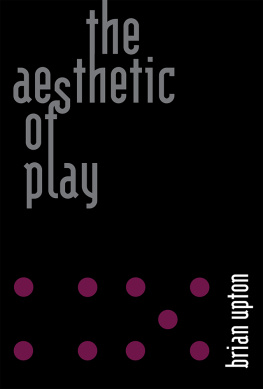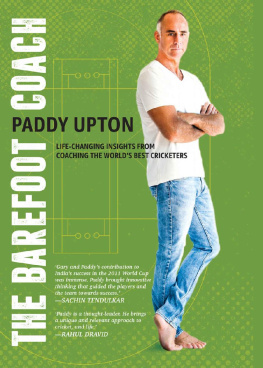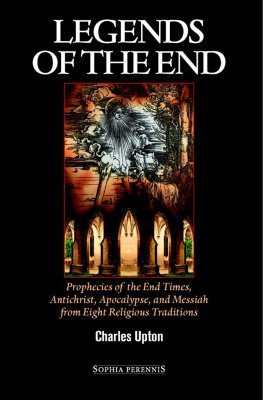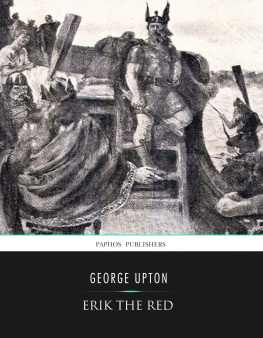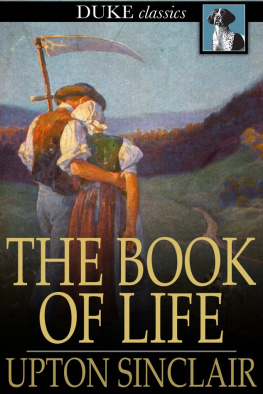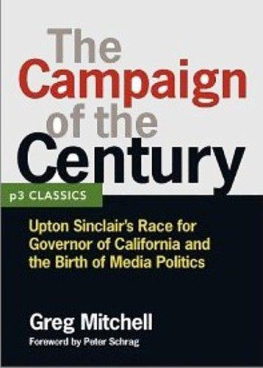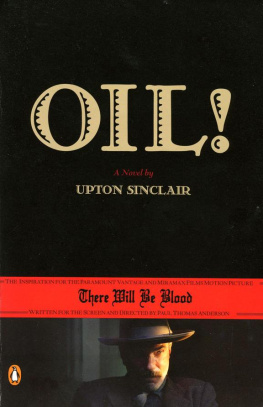Upton - The Aesthetic of Play
Here you can read online Upton - The Aesthetic of Play full text of the book (entire story) in english for free. Download pdf and epub, get meaning, cover and reviews about this ebook. year: 2015, publisher: MIT Press, genre: Children. Description of the work, (preface) as well as reviews are available. Best literature library LitArk.com created for fans of good reading and offers a wide selection of genres:
Romance novel
Science fiction
Adventure
Detective
Science
History
Home and family
Prose
Art
Politics
Computer
Non-fiction
Religion
Business
Children
Humor
Choose a favorite category and find really read worthwhile books. Enjoy immersion in the world of imagination, feel the emotions of the characters or learn something new for yourself, make an fascinating discovery.
The Aesthetic of Play: summary, description and annotation
We offer to read an annotation, description, summary or preface (depends on what the author of the book "The Aesthetic of Play" wrote himself). If you haven't found the necessary information about the book — write in the comments, we will try to find it.
The Aesthetic of Play — read online for free the complete book (whole text) full work
Below is the text of the book, divided by pages. System saving the place of the last page read, allows you to conveniently read the book "The Aesthetic of Play" online for free, without having to search again every time where you left off. Put a bookmark, and you can go to the page where you finished reading at any time.
Font size:
Interval:
Bookmark:
The Aesthetic of Play
The Aesthetic of Play
Brian Upton
The MIT Press
Cambridge, Massachusetts
London, England
2015 Massachusetts Institute of Technology
All rights reserved. No part of this book may be reproduced in any form by any electronic or mechanical means (including photocopying, recording, or information storage and retrieval) without permission in writing from the publisher.
Library of Congress Cataloging-in-Publication Data are available
ISBN 978-0-262-02851-6 (hardcover : alk. paper)
ISBN 978-0-262-32421-2 (retail e-book)
10 9 8 7 6 5 4 3 2 1
Everyone has some narrow talent. Mine happens to be the ability to explain complex subjects in clear language.
Howard Upton
This book is dedicated to my late father. He always had time to play.
Acknowledgments
Id like to thank the following individuals who generously read earlier drafts of this manuscript and provided invaluable feedback: Andy Ashcraft, Kelsey Cowger, Noah Falstein, Diane Feldman, Thomas Grip, Nathan Kelber.
Id like to thank the staff at the MIT Press and my editor, Douglas Sery, for their help in preparing the manuscript for publication. Id also like to thank the staff members of the Starbucks at Olympic and Westwood in Los Angeles, who kept me supplied with coffee while I was writing the book, and my children, Sam and Rose, for being good-natured test cases.
But most of all Id like to thank my wife and interlocutor, Elizabeth Randell Upton. The ideas contained in the book were developed during hundreds of hours of conversation between us. Many of the questions Ive attempted to answer were first posed by Elizabeth. Without her collaboration, the book would not exist.
Introduction
When I was ten years old, I talked my mom into buying me my first war game. It was Blitzkrieg, by Avalon Hill. I can still remember stumbling upon it in the toy section of a department store in Tulsa. It looked oddly out of place among the mass-market family games such as Monopoly and The Game of Life. The cover art was a stark composition of purple and black and red, with barbed wire and tanks and fighter planes. Realistic GAME of Lightning Warfare it said, in large bold letters. And the box was heavytwo or three times as heavy as any game Id ever held beforewhich seemed to suggest that there was something dense and important inside. I remember the weight of the box was actually one of the arguments that I used when convincing my mother to buy it. This wasnt going to be some flimsy trivial toy that I was going to get bored with in an afternoon. Something that heavy would clearly last a while.
When I got Blitzkrieg home, I discovered why it was so heavy. The board was hugelarge enough to cover our kitchen tableand there were literally hundreds of pieceslittle squares of pink and blue die-cut cardboard covered in numbers and cryptic symbols. The basic rules went on for pages, and the advanced rules were even longer. It took me more than an hour to punch out all the counters and lay them out neatly on the order of battle cards that showed the starting set-up. It took me even longer to figure out how the game was supposed to work. By the time I was ready to play, Id already been fiddling with the game for the better part of a weekend.
That was when I discovered the heartbreak of the solitary board gamer. I had this amazing new game all laid out and ready to play, but no one to play it with. My parents and my sisters liked board games, but not if they took hours to learn. They took one look at the thick booklet of basic rules and refused. My friends wouldnt even look at the booklet. They wouldnt even let me try to explain the rules to themthey were too long, too complicated, too much work to understand. They preferred to play Trouble, or ride bikes, or run around in the back yard.
Eventually, a few years later, I would discover a group of fellow gamers. They met every Saturday at Tulsas downtown library, and for eight hours every week I could hang out with people like me, people who didnt think there was anything strange about twenty-page rulebooks. We played Imperium, and Cosmic Encounter, and Star Fleet Battles, and Ogre, and dozens of others.
However, for three or four years at the beginning of my teens, my gaming experiences consisted mostly of me setting up a game and fiddling with it. Blitzkrieg was the first, but then came Waterloo (another Avalon Hill title) and Anzio and Dungeons & Dragons and 4000 A.D. and Divine Right. Id try out little experimental scenarios to see how the mechanics worked, and read through the rules over and over again, looking for odd nooks and crannies in the system that could be exploited in interesting ways. And as a result, I developed an odd relationship with games. Instead of approaching them as something to be played, I began to think of them as something to be played with. I discovered that analyzing the rules of a game could be just as much fun (for me at least) as following them.
Now, I admit, this is not normal. Most people dont approach games this way. But for me, this strange relationship with rule-based systems turned into a career. In my teens I began coding my own computer games, and in my twenties I began designing my own board games, and finally in my thirties I found myself, almost by accident, working as a professional videogame developer. I was the lead designer on the first Rainbow Six and the first Ghost Recon, among other titles. These days Im employed for Sony in a capacity I like to describe as a script doctor for games. I dont usually design an entire game from scratch anymore. Instead, I get called in to look at other peoples games while they are in production to figure out how to make them better. Partially this involves playing them with a critical eye, but it also means crawling inside their rule systems and taking them apart, in exactly the same way that I did during those long summer afternoons in Tulsa thirty years ago.
Its a job that Im lucky to have because, until relatively recently, no one thought about games as being designed. Games have always been with us, of course; archeologists have recovered 5,000-year-old board games from Egyptian tombs. But for most of human history, games were like folktalesinvented by anonymous amateurs, and then incrementally tweaked and polished by the invisible hands of hundreds of different players. Because this process was so diffuse, people didnt even think of it as a process. Games just seemed to happen, spontaneously bubbling up out of nowhere. Their genesis was opaquea mysterious conjunction of inspiration, intuition, and collaborative iteration. The idea that a game might have a designerthe way a novel has an author or a symphony has a composerwasnt even considered.
As a result, while games have always been with us, no one gave any serious thought to the theory behind them. Games never developed the sort of critical language that we take for granted when we study art or literature or music. If Im trying to understand how a story works, for example, I can draw on a 2,000-year-old tradition of literary criticism stretching from Barthes and Derrida back to Aristotle and Plato. Long-standing abstract concepts like character, plot, allusion, foreshadowing, irony, climaxthese are all tools I can use to take a text apart and analyze how it generates (or fails to generate) an aesthetic effect. Music has melody, harmony, major keys and minor keys, chords and time signatures. Even film, a much newer medium, has a powerful theoretical framework of scenes, cuts, shots, and camera angles. The analytical methodologies that people working in other creative fields can take for granted are only just now being invented for games.
Next pageFont size:
Interval:
Bookmark:
Similar books «The Aesthetic of Play»
Look at similar books to The Aesthetic of Play. We have selected literature similar in name and meaning in the hope of providing readers with more options to find new, interesting, not yet read works.
Discussion, reviews of the book The Aesthetic of Play and just readers' own opinions. Leave your comments, write what you think about the work, its meaning or the main characters. Specify what exactly you liked and what you didn't like, and why you think so.

